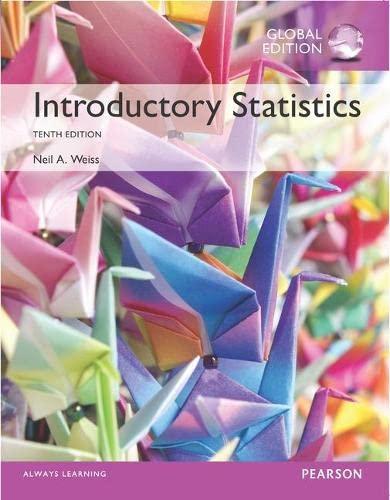M&M Colors. Observing that the proportion of blue M&Ms in his bowl of candy appeared to be
Question:
M&M Colors. Observing that the proportion of blue M&Ms in his bowl of candy appeared to be less than that of the other colors, R. Fricker, Jr., decided to compare the color distribution in randomly chosen bags of M&Ms to the theoretical distribution reported by M&M/MARS consumer affairs. Fricker published his findings in “The Mysterious Case of the Blue M&Ms” (Chance, Vol. 9(4), pp. 19–22). The following table gives the theoretical distribution.
Color Percentage Brown 30 Yellow 20 Red 20 Orange 10 Green 10 Blue 10 For his study, Fricker bought three bags of M&Ms from local stores and counted the number of each color. The average number of each color in the three bags was distributed as follows.
Color Frequency Brown 152 Yellow 114 Red 106 Orange 51 Green 43 Blue 43 Do the data provide sufficient evidence to conclude that the color distribution of M&Ms differs from that reported by M&M/MARS consumer affairs? Use α = 0.05.
Step by Step Answer:






